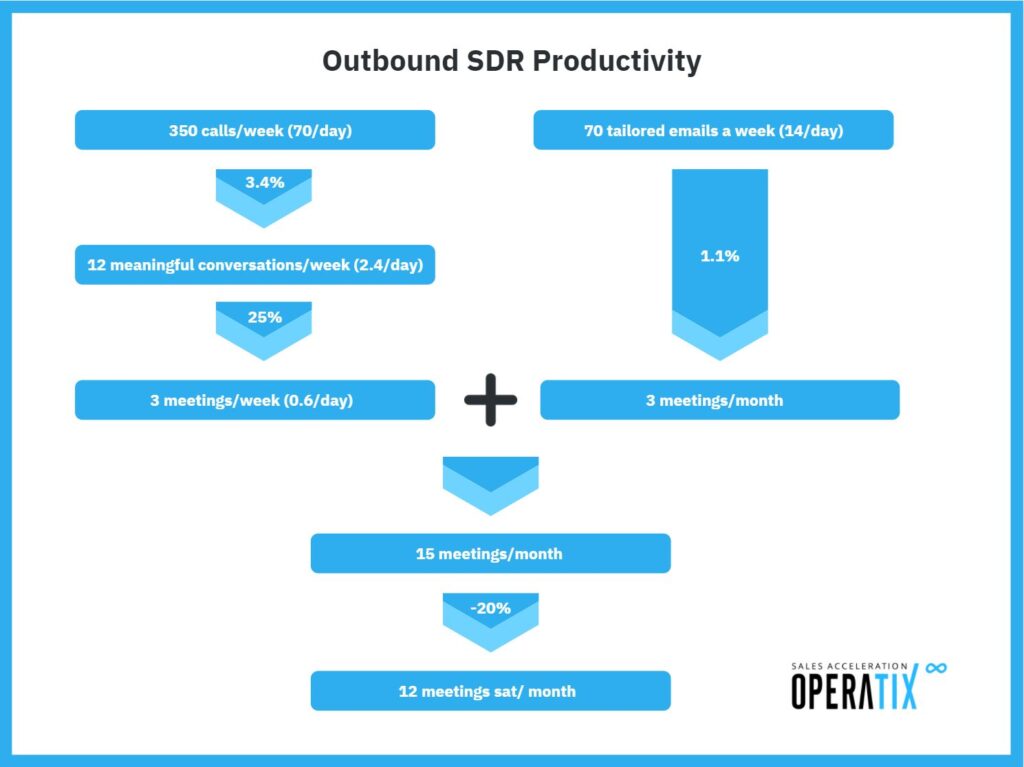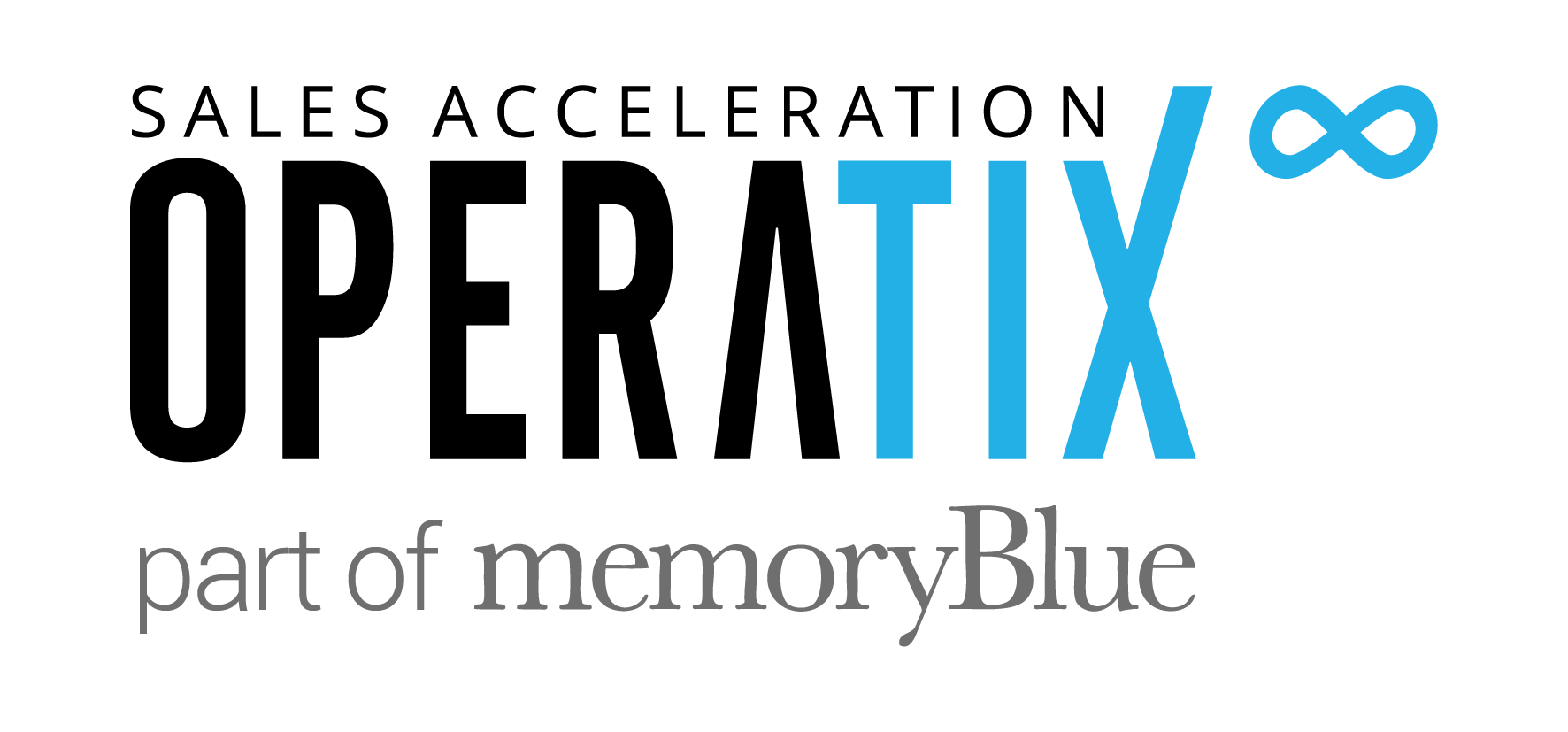SDR metrics are important to track, especially to understand if your outbound and inbound teams are performing in alignment with industry benchmarks.
It is common knowledge that Sales Development Reps play a fundamental role when it comes to pipeline generation. They are often the first point of contact your prospective customers will have with your brand, which makes the SDR function so strategic – though often undervalued.
SDRs have a hard job. They have to do the ‘dirty work’ that salespeople don’t have the time or inclination to do, they have to deal with rejection and be persistent in their approach without being perceived as being ‘too pushy’.
No one likes to receive a cold call, be interrupted by an unexpected e-mail or get an unsolicited connection request on LinkedIn, yet this is exactly what the SDR job is all about. Instead of thinking of their job as someone interrupting someone else’s job to ‘pitch’ their new shiny solution, SDRs should be seen as the messengers that will deliver the solution to your business problems.
Pipeline Generation
According to our internal research across more than 500 companies we supported over the past 10 years, SDRs are responsible for producing between 30 – 45% of the sales pipeline in B2B SaaS companies – this stat explains why the SDR function has been more valued than ever before and is making the race to hire good quality SDRs very fierce.
The Bridge Group found that the median pipeline generated per SDR is $ 3 million/year. There is wide variation across companies — some generating less than $750K in pipeline while others exceed $10M per SDR annually.
For more insights into the world of B2B SaaS, check out our Sales Development Report 2022. Compiled using data from industry leaders, this report details the latest trends, how to businesses manage their SDRs and a financial overview of the market.
So, now we understand the importance and value of the Sales Development function, what kind of activity levels & productivity can you expect from your Sales Development team, and the SDR metrics you should measure?


The median pipeline generated per SDR is $ 3 million/year
The Bridge Group – Sales Development Report 2021

Inbound SDR Metrics
First, we need to make a distinction between Inbound X Outbound Reps. Inbound SDRs (also known as BDRs, LDRs or MDRs – see lexicon below to decipher acronyms) will be focused on following up on marketing-generated leads that often need further qualification and research to assess if they are a potential buyer and if they fit your company’s ICP.
Based on our internal benchmark, Inbound SDRs can handle on average 15 leads per day. These leads could be anything from whitepaper downloads, demo requests, event attendees, website enquiries, webinar registrations, etc


Inbound SDR’s can handle on average 15 leads per day
We suggest that an average of 15 leads are dispositioned per rep daily, so they can do a thorough job in qualifying each lead on the following aspects:
- Company level – is the company of the right size? Is it in the right Industry/vertical?
- Geography – is the company based in a region that your business can serve?
- Job function / Seniority – is the person that made the enquiry within the correct department & seniority level to be in a position of authority or influence?
If the lead fits all of 3 elements listed above, the SDR’s job is to engage with the contact and understand more about their challenges and goals to then set up an introductory call with an AE.
If the seniority level is too low, the SDR’s job is to research and dig deeper to find higher-level decision makers within the company and engage with them.
Our internal data tells us that an inbound lead fulfilling all 3 of the above criteria happens in only 27% of cases, so most of the time the role of an Inbound SDR is focused on proactive outbound activities. (More on this in our Inbound Response Management E-book).
It’s worth noting that for some companies, smaller deals will be handled by external partners or Inside Sales teams, that can follow through with the full sales cycle.

Inbound Leads Conversion Rates
Now that we know that each Inbound SDR can handle about 15 leads a day, what kind of conversion rates can you expect from inbound leads?
The obvious answer is: it depends.
Let us take an ideal scenario where all the 15 leads are demo requests or meeting enquiries – the conversion rate will be anywhere from 75 – 80% from lead to meeting.
In a less favourable scenario, where all the leads are e-book downloads, webinar attendees or content syndication leads, the expected conversion will be around 5-10%.
So, for you to be more certain about the conversion rates you can expect from your inbound leads, it’s best to assess your conversion rates based on historical data or work out a lead-scoring system.
Be aware that while lead scoring is a great way to help prioritize lead follow ups, we believe that prospects would benefit from a more personalized touch. Too often we see companies with hundreds of leads sitting in their CRM systems waiting to reach a certain score and when they get a personal touch it’s often too late.
Based on our internal research, we’ve seen a 27% increase in conversion when an SDR is involved in a pre-scoring target being reached – not in a capacity of qualifying or selling, but more on an educational level. By engaging with the prospect using a consultative approach, an SDR team can steer them to some relevant content and genuinely help them in finding the information they are after.

Outbound SDR Metrics
For Outbound SDR’s where their approach will be from cold, with often very little brand awareness from prospects, the conversion rates tend to be naturally lower if compared to Inbound reps. That means a higher activity volume needs to be put in, combined with a profile of rep often known as ‘hunter’.
Based on our 10 years of experience working across over 500 campaigns on behalf of our B2B SaaS customers, this is the level of activity expected from our Reps:

As the graph demonstrates, an Outbound SDR should produce on average 15 meetings a month, with a dropout rate of 20%, meaning 12 meetings attained/month.
These stats demonstrate the level of activities expected from an Outbound SDR, taking into consideration a multitouch approach of using phone + email + social selling techniques.


An Outbound SDR should produce on average 15 meetings a month
The productivity of each rep will depend on multiple factors, such as:
- Data quality
- Tools
- Resonance of the message
- Seniority level of decision-makers your company is trying to sell into
- Brand awareness
- Rep experience
- Level of qualification expected from each lead.
We dive deeper into each of those elements below:
Data quality: a clear set of data with validated email addresses, pre-opted in data and direct dials means your rep will spend less time profiling contacts and trying to find phone numbers & e-mail addresses, which directly impacts their level of productivity.
Tools: Sales automation tools such as Hubspot, Frontspin, Outreach, SalesLoft, Apollo, etc can help automate the outreach process, decreasing the time reps will be spending in sending manual emails and dialling. Tools like UserGems can also help automate pipeline generation by turning buyer job changes into qualified leads.
Resonance of the message: some companies utilize SDRs to assess Product-market-fit rather than as a pipeline source. Especially early-stage start-ups and less established vendors with a disruptive message will take more time to refine their message to the market, which will ultimately impact the productivity of the rep.
Seniority level: Depending on the personas your company is targeting, it may be ‘easier’ or ‘harder’ to convert them. Typically, C-Level decision-makers are seen as being harder to get hold of (although there are some contrary believe in this theory – See ‘Land Bigger Deals Faster by Selling Straight to the C-Suite’)
Brand awareness: If your company is a more established B2B SaaS vendor with a well-known brand, the SDR will need to spend less time explaining the value your company can bring as there will already be awareness of what your company does.
Rep experience: More experienced reps tend to show higher productivity levels due to their confidence with the message & familiarity with tools.
Level of qualification: If a company expects BANT-qualified leads from their SDRs, the lead quality will increase while the lead quantity decreases.

SDR Metrics – Conversion Rates
Now that we understand the typical productivity/activity levels expected from each SDR, it’s time to understand the average conversion you should expect from the SAL’s (Scroll down for acronym lexicon) generated by your SDR team.
Based on our 10 years of experience working across over 500 campaigns on behalf of our B2B SaaS customers, the average conversion from SAL to SQL we’ve seen across the board is 52.7%.
That means that on average, 1 in 2 SALs (i.e. meetings) generated by an SDR will lead to a next step in the sales process. A next step in our definition could be anything from a Demo, a POC, a Proposal/Opportunity to a Sale.


The average conversion from SAL to SQL we’ve seen across the board is 52.7%.
So, if we take an example of a B2B SaaS vendor where an SDR managed to secure 10 SAL’s per month, the company can expect that about 5 of those meetings will progress to a next step in the sales process.
To help you understand further these conversion rates, we’ve developed a Pipeline Calculator where you can simulate how many SAL’s are needed for you to hit your Pipeline targets.
Recapping SDR Metrics
In this blog we covered what to expect from your Outbound & Inbound Teams:
- The expected amount of leads an inbound SDR can handle per day is about 15
- The conversion rate from an inbound lead to a meeting varies significantly depending on the quality of those leads (can range from 5-10 % for low intent leads – 75-80% for high intent leads)
- Outbound SDRs should produce 15 meetings a month, with a drop out rate at 20%, meaning 12 meetings attained/month.
- The productivity of each rep will depend on factors such as: Data quality, Tools, Resonance of the message, Seniority level of decision makers your company is trying to sell into, Brand awareness, Rep experience & Level of qualification expected from each lead.
- The Typical conversion rate from an SAL (Sales Accepted Lead) to a SQL (Sales Qualified Lead) is 52.7%
If your SDR team is trending below these stats, read further on 5 Tips to Consider when Setting up Your Sales Development Team and How to Choose an Outsourced SDR Company.
For an exclusive insight into the B2B SaaS industry, check out our Sales Development Report. Created in partnership with Pavilion, there is a wealth of information regarding best practises, trends and financial data collected by industry leaders.
Lexicon
SDR: Sales Development Representative
BDR: Business Development Representative
LDR: Lead Development Representative
MDR: Marketing Development Representative
AE: Account Executive
SAL: Sales Accepted Lead (Right persona in the right company that fits your company’s ICP)
SQL: Sales Qualified Lead (SAL + next step in the sales process)
ICP: Ideal Customer Profile
POC: Proof of Concept
BANT: Budget, Authority, Need, Timing



